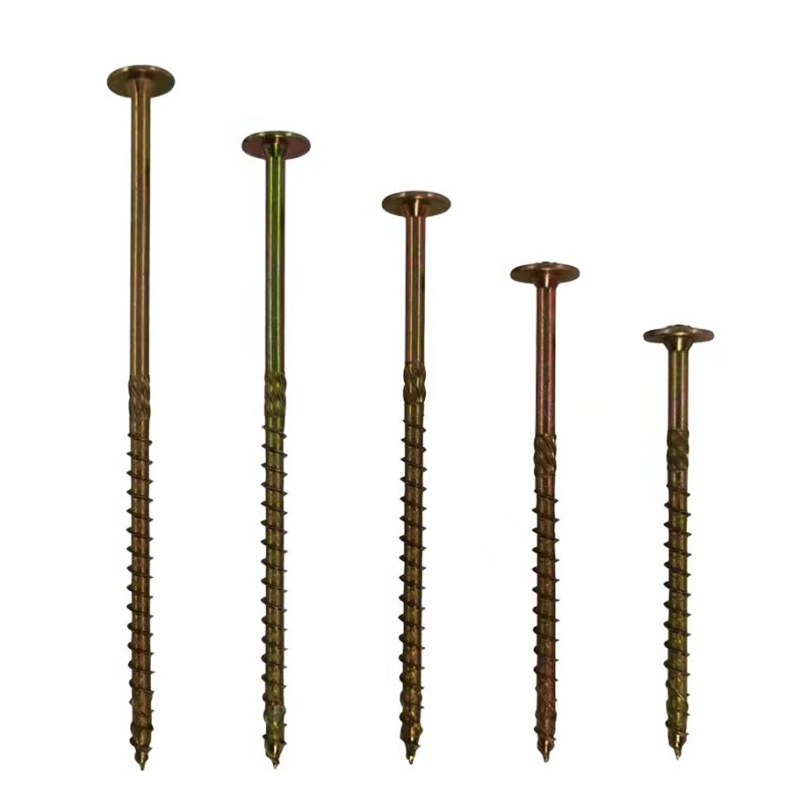What are the recommended methods for installing wood screws to ensure maximum holding strength and minimize wood damage?
Installing wood screws effectively involves a combination of proper technique, understanding of materials, and adherence to best practices to ensure both strong holding power and minimal damage to the wood. Wood screws, often referred to as Grass Rope Nails in some contexts, are essential for securing components in woodworking, carpentry, and construction projects. Their design, characterized by a coarse thread and a pointed tip, is optimized for gripping wood fibers securely and penetrating surfaces without causing undue splitting or weakening of the material.
To begin with, one of the crucial steps in installing wood screws is pre-drilling pilot holes. This step is particularly important when working with hardwoods or dense woods where driving screws directly can lead to splitting. The pilot hole should be slightly smaller than the diameter of the screw's core, allowing the threads to grip firmly without compromising the wood's structural integrity. This method not only prevents splitting but also facilitates easier insertion of the screw, reducing the effort required and minimizing the risk of damaging the screw threads.
Countersinking is another key technique to consider. After drilling the pilot hole, using a countersink bit creates a small recess at the surface of the wood. This allows the screw head to sit flush with or slightly below the wood surface. A flush finish not only enhances the aesthetics of the project but also prevents the wood from cracking around the screw head and minimizes potential snagging or catching on the surface.
Choosing the correct screw size and type is fundamental to achieving optimal results. The length of the screw should be appropriate for the thickness of the materials being joined, ensuring that it penetrates fully into the receiving material without protruding excessively. Different types of wood screws, such as flat head, pan head, or hex head, offer varying advantages depending on the application. For instance, flat head screws are ideal for countersinking, while pan head screws provide a broader bearing surface and are suitable for applications requiring a bit more torque.

Applying even pressure when driving the screw is crucial. Whether using a screwdriver or a drill with a clutch, maintaining consistent pressure prevents the screw from stripping and embeds it firmly into the wood. Over-tightening should be avoided, as it can weaken the grip or cause the screw to break through the material. Lubricating the screw threads with wax or soap before installation can reduce friction, making the driving process smoother and lessening the likelihood of damaging the wood fibers.
Wood screws, including the specialized Grass Rope Nails, are often designed with serrated threads and passivated coatings to enhance their gripping strength and corrosion resistance, respectively. These features make them particularly suitable for applications where durability and reliability are paramount, such as in outdoor constructions or furniture making. Their ability to maintain a strong hold over time, coupled with their resistance to environmental factors like moisture and rust, ensures longevity and reliability in various woodworking projects.
Mastering the art of installing wood screws involves a blend of technical knowledge and practical skill. By pre-drilling pilot holes, countersinking where necessary, selecting the right screw type and size, and applying consistent pressure during installation, woodworkers can achieve maximum holding strength while minimizing the risk of damaging the wood. Understanding the advantages of specialized screws like Grass Rope Nails" underscores their role in ensuring robust and enduring connections in woodworking and construction applications. These methods not only improve the functionality and longevity of the projects but also contribute to the overall craftsmanship and quality of finished woodwork.
Related products
-

Pan Head Cross Series Drill Tail Screws
-

Round Head Huasi Cross Series Drill Tail Screws
-

Pan Head Cross Series
-

Cross Flat Head Dry Wall Nail
-

Large Flat Head Plum Blossom Groove Grass Rope Nail
-

10.9 Grade Flange Outer Hexagonal Fine Thread Bolt
-

Square Clamp Right Angle Screw
-

Various Models Of U-Shaped Screws
-

Iron Galvanized Flange Nut Hexagonal Anti Slip Locking Belt Tooth Washer Screw Cap
-

Stainless Steel Countersunk Head Self-Tapping Screw
-

Stainless Steel Pan Head Drill Tail Screw
-

410 Stainless Steel Outer Hexagonal Drill Tail Screw

 English
English  English
English 中文简体
中文简体 русский
русский


